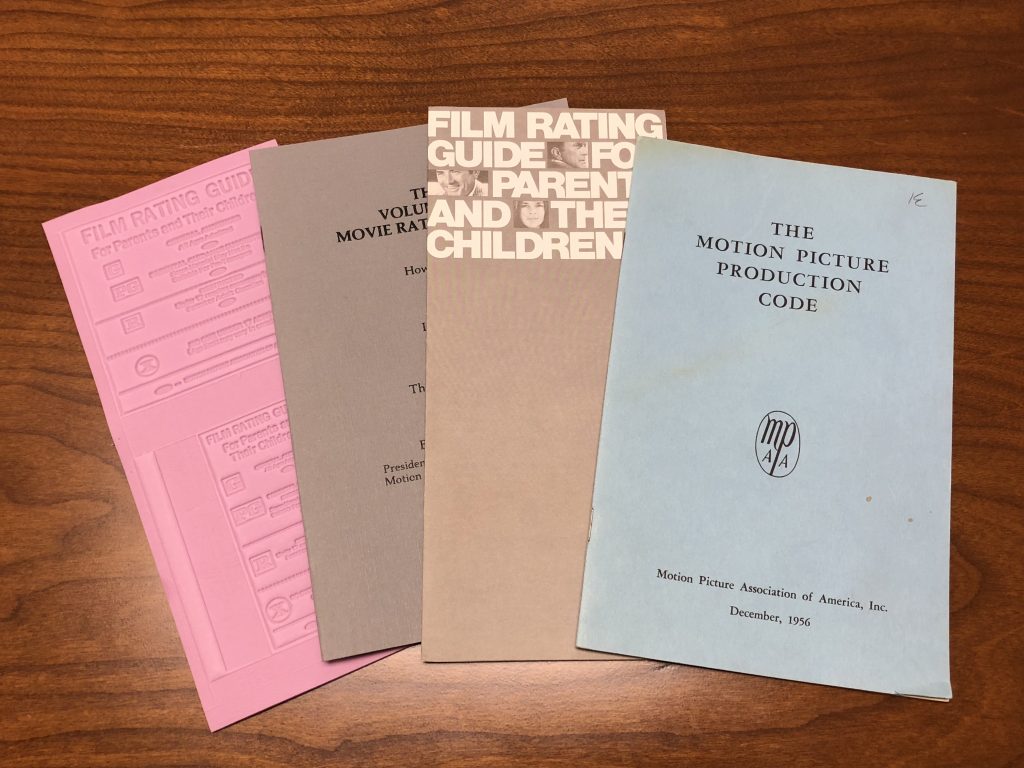MPAA Ratings at 50: Digital Archive
In conjunction with the 50th anniversary, the MPAA has released a digital archive of historical documents from key moments in the evolution of the film rating system, including a 1956 copy of the Hays Code, which predated the ratings, a press release and statement from MPAA Chairman Jack Valenti in 1968 announcing the new system, and a “printing flong” that was mailed out to newspapers to encourage awareness of the ratings.
The Motion Picture Production Code, known informally as the “Hays Code,” imposed strict regulations on films with the intent to preserve moral standards of the time. This example from 1956 was issued the same year as classic releases like The Bad Seed, The Ten Commandments, and The Man Who Knew Too Much.
Films that complied with the Production Code’s standard of “decency and morality,” were given a literal seal of approval. This 1960 advertisement explains the meaning of the seal.
By 1965, the MPAA was beginning to explore new methods to keep movie patrons informed while allowing for innovation and creativity in film production. This pamphlet outlines burgeoning concerns with censorship and signaled a shift in philosophy for the Production Code.
Shortly after joining the MPAA as President, Jack Valenti delivered a speech detailing his early thoughts on a new process that eventually became the rating system. Mr. Valenti immediately showed interest in adapting to a more dynamic method for reviewing movie content.
A press release in October of 1968 announced the voluntary film rating program that would replace the Production Code on November 1. Films would be given a rating of G, M, R or X.
A personal statement from MPAA President Jack Valenti accompanied the press release announcing the ratings. Mr. Valenti spoke passionately about his intent to protect the First Amendment and the creative process. He also addressed his expectations for the implementation of the system as well as his confidence in its effectiveness.
The MPAA mailed raised plastic inserts featuring a brief film rating guide to newspapers across the country asking each publisher to include the guide in their publication to increase audience awareness. Many, but not all, publishers were receptive.
A 1968 advertisement sought to orient movie audiences with the new rating system that included G, M, R, and X. The notice informed audiences about how to interpret the ratings as well as the voluntary nature of the system.
By 1970, the Production Code had been replaced by an informational pamphlet targeted at the primary user of the rating system – parents.
MPAA President Jack Valenti aggressively promoted awareness of the ratings, as he did in this 1972 letter to newspaper publishers encouraging the inclusion of a ratings guide.
A 1972 pamphlet intended to inform parents about the rating system shows that the ratings have evolved to include G, PG, R, and X.
The MPAA distributed a booklet in 1987 that included information similar to previous parent guides, but also took a reflective look at the first two decades of movie ratings. The publication details the history and public reaction to the ratings that now include G, PG, PG-13, R, and X.
A July 1992 press release details the MPAA’s intent to add short explanations for ratings, or “descriptors,” to PG and PG-13 rated films. R-rated films already received unique film rating descriptors beginning in 1990.
MPAA President Jack Valenti wrote to the last remaining local film board in Dallas, TX, urging the members to abandon their censorship efforts and honor the MPAA ratings. The Dallas Board would disband the following year.
For more about the history, evolution, and film rating process, view the new report “G” is for Golden: The MPAA Film Ratings at 50.


